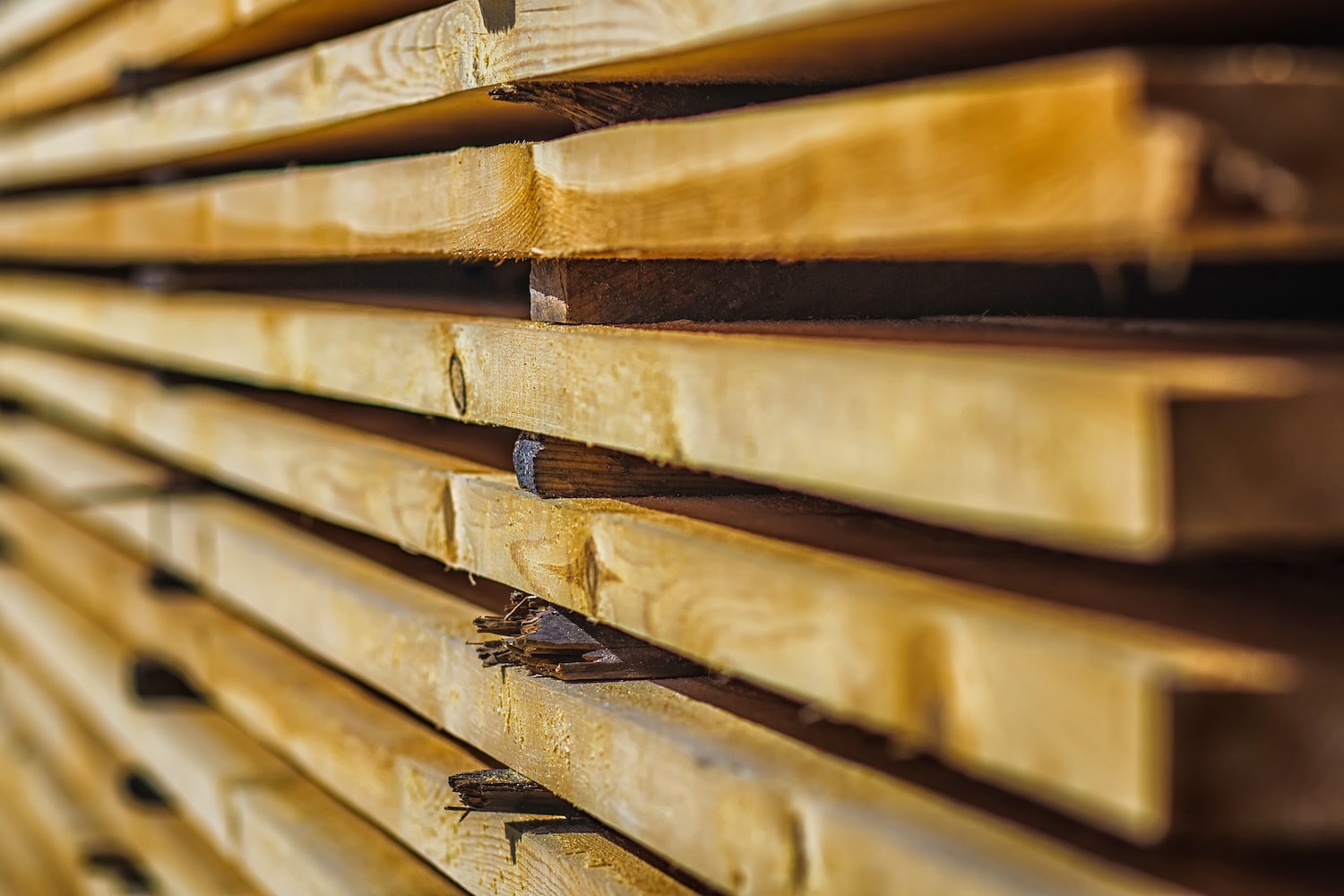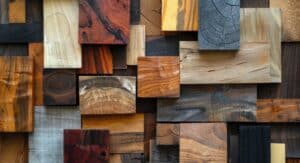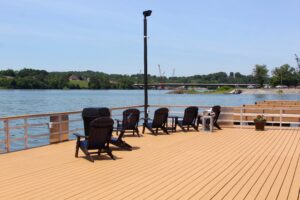When approaching a building project that requires a sturdy lumber, the last thing you want to have to worry about is the wood rotting out from under you. While managing weathering, damage, and other stresses to your builds, there are ways to avoid dealing with the stress of decay and wood-eating insects.
Pressure treated lumber is a popular solution, giving your builds added longevity. Below, we’ll cover the different types of pressure treated lumber, their uses, and help you decide which is best for your project.
What is Pressure Treated Lumber?
When compared to typical lumber, pressure treated (or PT) lumber boasts a resistance against rot, mildew, bugs, and other types of natural decay that wood is susceptible to. This is achieved by a unique preservation process.
The wood undergoes a pressurized treatment where preservatives are infused deep into the wood via water or oil. PT lumber can be treated with a number of different preservatives, each of which make it more resistant to specific agents of decay. Some lumber is even treated for fire protection.
Types of Pressure Treated Wood
The main distinction between types of PT lumber is what it’s able to safely come in contact with, and for how long. The lumber will be labeled to indicate the type of preservative agent used on it, its intended building use, and other important information.
The planks are typically cut from sturdy evergreen woods such as fir, pine, or spruce. And, as with all other lumbers, are available in varying grades based on the number of knots or defects present in the wood.
Active Ingredients in Treated Wood
The specific chemicals used in a pressure treatment will affect what exactly that plank is resistant against. Most modern protectants contain copper as a preservative, and ones meant to ward off insects may include ammonium or arsenic. The chemicals used will be visible on the label of each individual plank. Three of the most commonly used active ingredients are:
- Copper Azole (CA): Suitable for above-ground, in-ground, and freshwater uses.
- Copper Azole Type C (CA-C): Contains both soluble copper and two types of fungicides, making it a strong protectant against both fungi and wood-eating pests.
- Chromated Copper Arsenate (CCA): A maximum protection solution approved for marine construction, but not for most residential applications.
Types of Pressure Treatment
Different preservative chemicals can be used to deter different agents of decay, but the most immediately seen difference in PT lumber is in how these preservatives are delivered into the wood. The two most common methods are:
- Water-borne treated lumber: Used for residential, commercial, and industrial building, this type of preservation uses a solution of water and preservative chemicals that is infused deep into the wood. These planks are then either dried naturally or by kiln, allowing the water to evaporate and leave behind the preservatives.
- Oil-borne treated lumber: Oil-borne treated lumber is similar to water-borne treatments, but the preservatives used are not water soluble. As such, they’re instead delivered in a base of petroleum or other organic oils. Oil-borne preservatives typically boast protection against not only insects, but also mold and fungi. However, due to the oily residue left behind, this lumber is not easily painted and can leech oil over time.
Uses for Pressure Treated Wood
You can use pressure treated wood for most any project you would use typical lumber for, but it’s typically intended for outdoor use. Building outside stairs, railings, decks, or docks out of PT lumber affords them additional protection and longevity. The protectants within the wood will keep it safe from insects, mildew, and other types of rot that naturally happen when they’re in constant contact with the ground or bodies of water.
PT lumber is also ideal for uses such as:
- Fencing
- House trims
- Raised garden beds
- If you are planting edibles, the planter should be lined to prevent the chemical protectants from getting into the soil.
- Accessibility ramps
- Wooden walkways
- Gazebos or pergolas
- Sheds
Because of the chemicals used to preserve pressure treated wood, it should not be used for indoor projects. These chemicals are not typically harmful when exposed in small amounts, but continuous exposure can be hazardous to long-term health. When working with PT planks, gloves and other protective wear can be used to help circumvent any stress of these hazards.
Additionally, pressure treated wood should never be burnt as a form of disposal.
The AWPA Category Use System
The American Wood Protection Association is a non-profit organization that sets in place standardizations for both treated and untreated wood products. These standards are in place to ensure sustainability for lumber production and safety for the ecosystem in how the lumber is treated. Their use category system is used in all pressure treated wood products as part of the labeling to indicate where and how it can be safely used. The full system can be read on the AWPA’s website, but the most pertinent for PT lumber are:
- UC4A: Ground contact and fresh water compatible. Used for fencing, guardrail posts, decks, cross ties, and utility poles in low-decay areas.
- UC4B: Ground contact and fresh water compatible. Used for permanent wood foundations, horticultural posts, cross ties, and utility poles.
- UC4C: Ground contact and fresh water compatible. Ideal for use in high-decay areas and for critical structural components.
- UC5B: Good for continuous marine exposure in salt or brackish water, often used for pilings, bulkheads, and bracing.
- UC5C: Good for continuous marine exposure in salt or brackish water. Similar use to UC5B lumber, with differing decay resistance to certain marine organisms.
Contact Us
Whether you’re looking to add to a residential or commercial build, a longer lifespan for your lumber is always enticing. If you have additional questions about pressure treated wood labeling, ingredients, uses, or pricing, contact our professional team at Harbor Exports.
We carry the materials needed for your next project, as well as the expertise to make sure it’s done right.
- About the Author
- Recent Posts
Brad Enfinger has been in construction for over 20 years and has been involved with every material from concrete slab to laying the roof on houses. Brad’s diverse experience has given him the knowledge needed to assist those with shipping building materials, whether it be a house, pole barn, deck, or a dock. Brad at Harbor Exports has anything for your building material needs and can export material all over the world.




